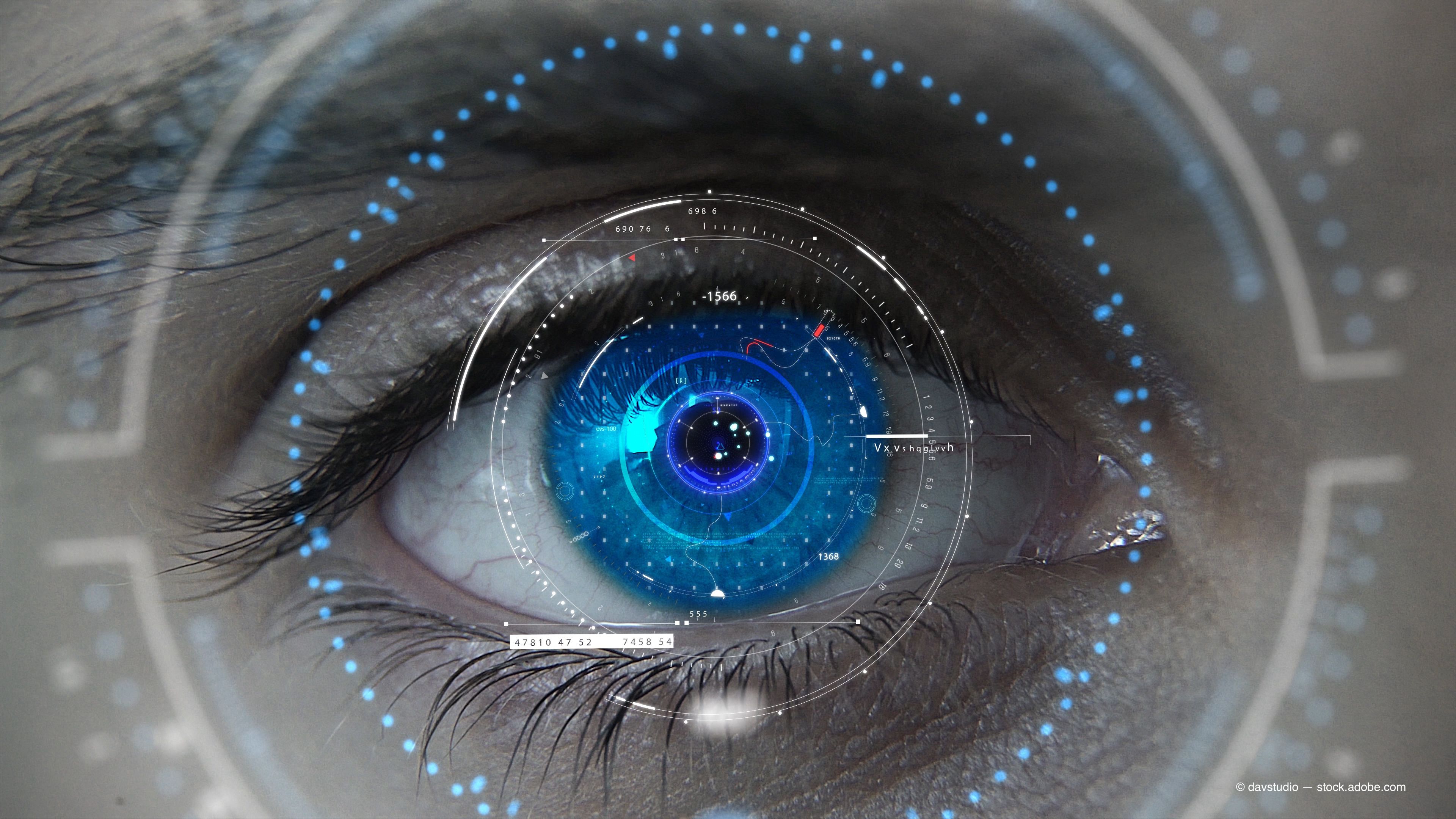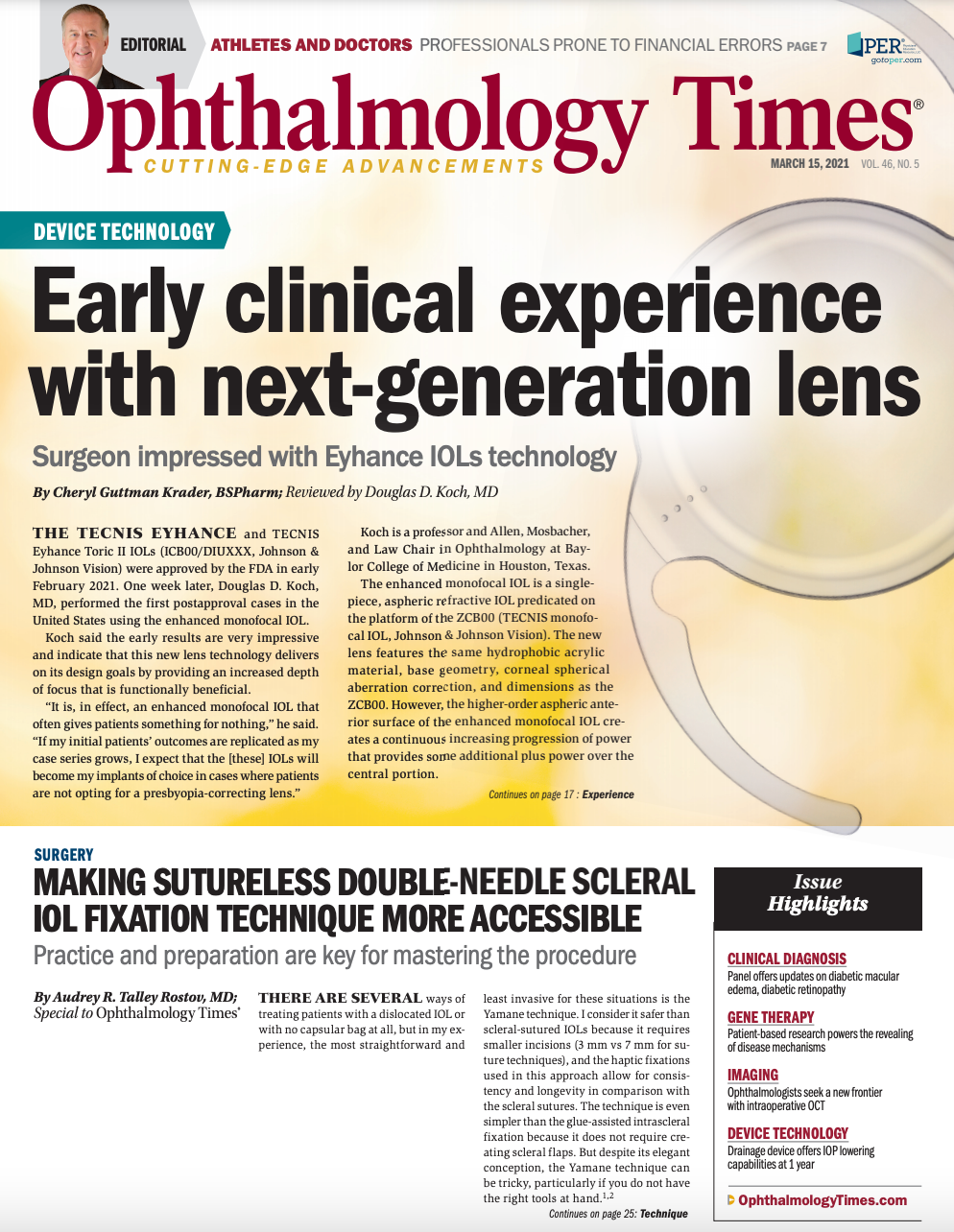Publication
Article
Digital Edition
Intracanalicular dexamethasone insert offers hands-free therapy
Author(s):
An alternative to drops, the option provides consistent therapeutic levels.

This article was reviewed by Francis S. Mah, MD
Dexamethasone ophthalmic insert 0.4% (Dextenza, Ocular Therapeutix, Inc) has demonstrated fast and effective action for treating inflammation and pain after cataract surgery.
Patient adherence with drop regimens has always been problematic and may be more so in an elderly population and perhaps compromise patient outcomes as the result of subtherapeutic treatment.
This intracanalicular implant is a hands-free alternative to traditional drops and provides tapered therapy for up to 30 days after insertion, according to Francis S. Mah, MD, director of cornea and external disease and coordinator of refractive surgery at Scripps Clinic in La Jolla, California.
Related: Studies explore pharmacological approaches to cataract prophylaxis, treatment
Multicenter phase 3 studies of the efficacy of the insert were designed to provide a cumulative measure of the drug effect and the time at which postoperative inflammation and pain resolved after the implant’s insertion.
The pooled post-hoc analysis included 926 patients who had undergone cataract surgery and intracanalicular insertion on day 1.
The patients were randomized to 1 of 3 phase 3 trials; 541 patients received active treatment and 385 received placebo. No patients in the active treatment groups received topical nonsteroidal anti-inflammatory drugs.
The primary end point was the cumulative drug effect based on anterior chamber cell and flare scores and pain scores; the other end point was the time to resolution of inflammation and pain based on clinically relevant anterior chamber cell scores and pain scores, Mah recounted.
Related: Challenges to topical drop adherence after cataract surgery
Results
Mah noted that the mean anterior chamber cell, flare, and pain scores all differed significantly in favor of the implant as soon as 4 days postoperatively for inflammation and 2 days postoperatively for pain.
“The cumulative drug effect of the treatment as evidenced by the area under the curve (AUC) outcomes compared with placebo suggested the consistency of the drug effect benefits over 30 days,” he said.
The results showed significant (P ≤ 0.001 for all comparisons) differences between the active treatment groups and placebo in anterior chamber cells, flare, and pain.
Related: Drug delivery vs drops: Controlling postop pain, inflammation in cataract surgery patients
Early resolution
The insert resulted in earlier resolution of inflammation that was about twice as fast as placebo, ie, day 7 vs day 14).
Significantly (P < 0.05 by the log-rank test) faster pain resolution also was seen with the insert on day 4 compared with day 14 in the placebo group in the 75th percentile population, he said.
Conclusions
The key takeaways from the study were that the AUC demonstrated the consistency of the drug effect benefits over 30 days in the 3 clinical trials that included a total of 926 patients.
Related: Study outlines use of injectable intraocular steroid over drops
The pooled post hoc analysis showed that the insert provided faster time to clinically relevant resolution of inflammation after cataract surgery compared with placebo.
The 75th percentile population had faster pain resolution with the insert compared with placebo.
“These data support the totality of available evidence for [the insert’s] rapid and consistent efficacy in the treatment of postcataract inflammation and pain. Further studies investigating [the insert’s] comparison with other steroid eye drops are currently being conducted,” Mah concluded.
--
Francis S. Mah, MD
e:Mah.Francis@scrippshealth.org
Mah is a consultant for Ocular Therapeutix, Inc, and was an investigator in the clinical trial. Ocular Therapeutix, Inc, sponsored the study under discussion.

Newsletter
Don’t miss out—get Ophthalmology Times updates on the latest clinical advancements and expert interviews, straight to your inbox.




